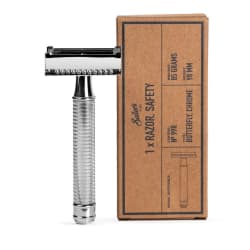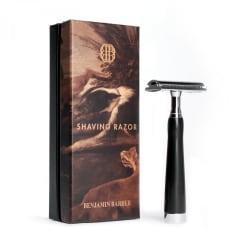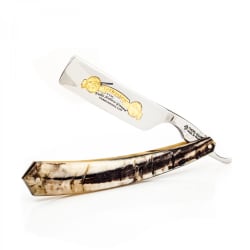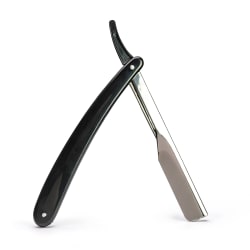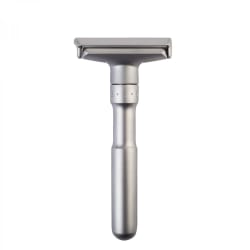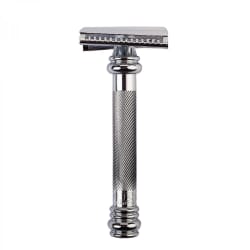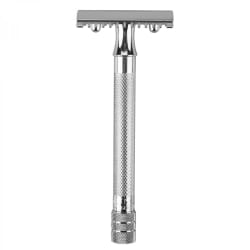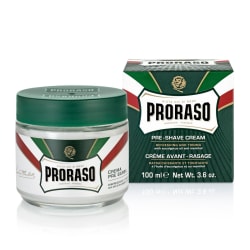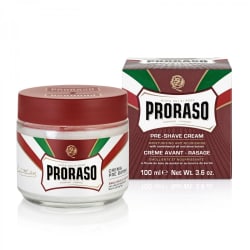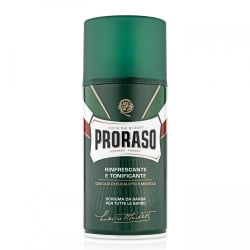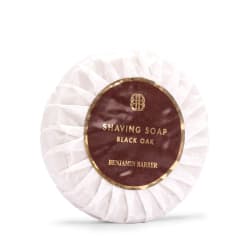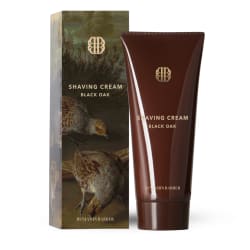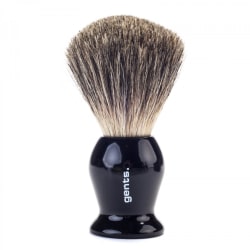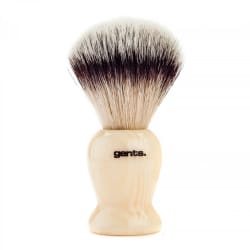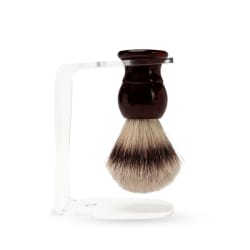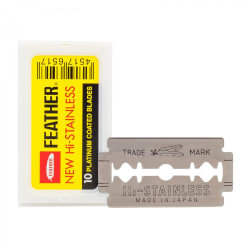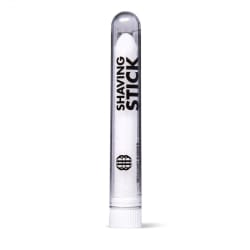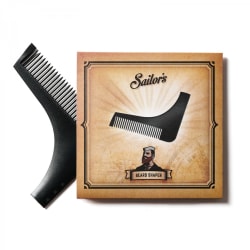EXPERIMENT
WITH YOUR SHAVE
WRITTEN WITH barberare Simon
Not happy with your shave? Do you feel like you're in the same rut and that you should try something else? Perhaps you're not getting a clean shave or not getting those elegant lines on your beard? Maybe you need to think outside the box and not just do what you've always done as a matter of routine. Here are some tips!

SHARPNESS AND EFFICIENCY
Are you not getting a clean shave but have just carried on as usual automatically? Perhaps you belong to the group that shaves with a regular Gillette multi-blade razor? If so, it's time to take action and think outside the box to revitalise your shaving.
What you need is a classic safety razor! Don't you cut yourself, you ask? No, not if you put your old Gillette methods on the shelf. Because you definitely don't want to press here. The sharply sharpened double blades should just glide on the skin under the weight of the razor, while taking much deeper and making you much more clean-shaven. In addition, your skin won't be as irritated and sensitive. The blades are also so incredibly affordable that the cost of the razor is quickly recouped considering what a package of blades for the multi-blade razor costs.
If you want to take it even further, try a razor with interchangeable blades - a so-called shavette - or maybe even an old-fashioned full-blade razor with a handmade handle, if you're willing to spend some time grooming and shaving. It doesn't get much more experimental and exciting than that, and isn't there a bit of a coolness factor in linking to an old tradition?
SPECIALISED HOVERCRAFTS
If you feel that a standard safety razor is still not enough for your beard growth, experiment with the specialised razors available. A so-called 'open comb', where the blade is basically only protected by a comb (which also helps to raise the hairs), is really aggressive and effective
If you also have sensitive skin but still want the ultimate in sharpness, try the clever "slant bar" razor, based on the principle of a guillotine (yes, we know how it sounds...) and whose special oblique angle cuts off the hairs in an extremely effective way and at the same time is gentle on the skin due to its special construction. A bestseller for those with that extra tricky beard.
pre-shave
Do you have a thick beard and perhaps extra sensitive skin? Then why not try adding a layer of pre-shave under the shaving cream for an extra protective barrier and even better glide? If you've visited a barber, you've probably noticed this procedure. There are both shaving oils, such as Truefitt & Hill, and creamy pastes from Prorasos - which you choose is a matter of taste. Pre-shave is particularly suitable for safety razors and razor blades - for Gillette razors, it's important to make sure the oil is not so thick that the blades are plugged.
shaving foam
Perhaps you've just been using the regular old foam in a spray can like everyone else. That doesn't really do the job, does it? Instead, explore the possibility of a lovely lather in the form of shaving cream or shaving soap that you work up with warm water. You will immediately notice the difference! As you work up the lather with water, the consistency becomes thicker and creamier so that the skin is better protected and the razor glides better.
NOTE! It is especially important to use this if you are using a safety razor or knife as described above - regular shaving foam contains too much air and water to provide adequate protection.
A tube of shaving cream, such as Benjamin Barber or Truefitt & Hills, is practical and hygienic to take with you when travelling, while allowing you to work up the lather with your fingers. If you feel like going for the classic look, you can choose shaving soap, which requires a shaving brush. We can recommend Benjamin Barber's soap with the pleasant scent of Black Oak - if you want even more character in the scent, try a soap with the scent of Oud or Saffron & Leather!
If you use a multi-blade razor (Gillette and similar), try shaving cream and shaving soap for this too - it works great and the skin just gets better protection while making shaving a little more fun. Alternatively, you can try Proraso's Shaving Foam in a jar, which is based on a unique formula that is creamier than the usual shaving foam.

SHAVING BRUSH
If you have not tried a shaving brush, it may be time to take shaving to a new level. For shaving soap, the brush is necessary to work up the lather, but also for shaving cream, the brush adds that little extra, as the friction from the brush makes the hairs stand up more easily and the skin is also exfoliated. The lather is simply of better quality. It is optional whether you want one of badger or synthetic, but in the case of badger, use one with slightly coarser hair for shaving soap such as a Pure Badger, while a soft and plump Silvertip is perfect for shaving cream.
rakblad
Felet många gör är att slita alldeles för länge med gamla blad. Gilletteblad blir snabbt slöa och pluggar igen, och gör då mer skada på huden än nytta.
The so-called double blades for safety planes keep their sharpness much longer, but we recommend that you change them as soon as you feel you have to do some extra work, for example after seven to ten days. However, double blades are so cheap that there is no reason to skimp on them. If you have a thick beard and are starting to feel comfortable with your safety razor, try the Japanese Feather - the worst. And don't forget to make sure you rinse the blades thoroughly, especially if you use a multi-blade razor, to reduce the risk of bacteria and prevent the blades from clogging.

TECHNIQUES
No matter what kind of shaving tool you use, you may sometimes have to experiment to get a good result. Feel free to stretch the skin to give the razor a flat surface to work on, and if you use a safety razor or knife, it's also a must.
There is no getting away from the fact that counter-hair pulling is the most effective, but you should prepare the skin by first pulling with the hair. On the other hand, it is important not to draw too many times in the same place. Start with large areas like the cheeks, which have the softest bristles, and finish with the troublesome areas of the upper lip and chin. Be sure to stretch the skin especially here.
If you use a knife or safety razor, also pay attention to the slope - estimate an angle of about 30 degrees but try it out (depending on the razor and the coarseness of the beard, you may need to adjust to a steeper slope). Also try shaving sideways and see if it makes an extra difference. In some places, hairs can grow in different directions - something that is particularly typical of the neck. So try to study the direction in which the hair grows. In case of an accident, it's always worth having an alum stick handy!
Advice!
If you have trouble getting good lines, try this ingenious shaving template! Place it flat and close to the skin, choose your angle according to your style and face shape and shave from the edge of the template outwards! Just like that, you have a perfect beard cut!

